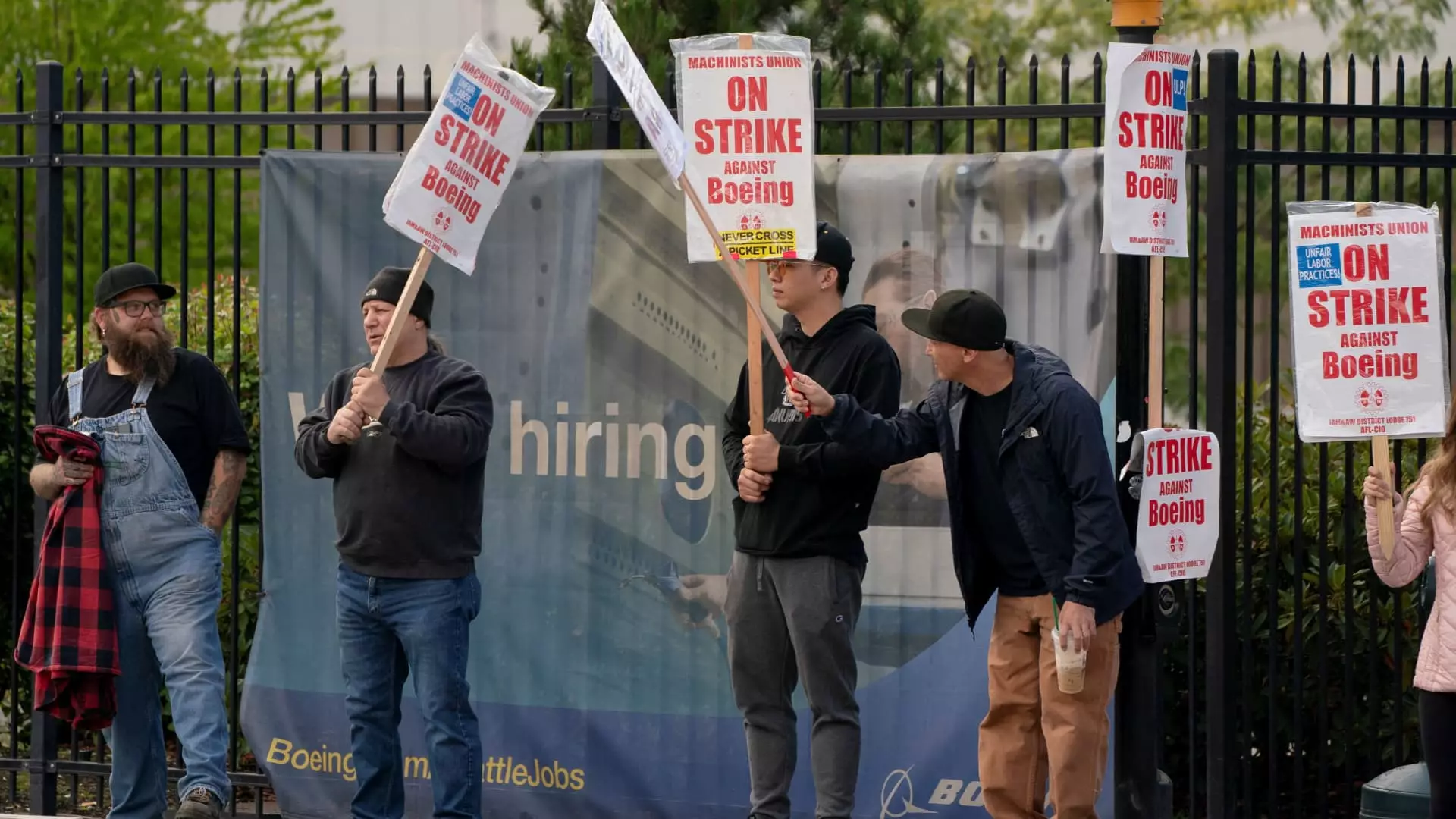Boeing, a titan of the aerospace industry, is once again navigating turbulent waters as it grapples with substantial labor unrest. The company’s recent decision to implement sweeping cost-cutting measures highlights both its operational challenges and the delicate balance it must maintain between managing financial resources and meeting the needs of its workforce. The growing strike by over 30,000 factory workers reveals the underlying tensions that have long simmered within the corporate structure, and Boeing’s response raises questions about its strategic priorities and long-term viability.
The immediate trigger for Boeing’s cost-cutting measures was a substantial strike that commenced after employees overwhelmingly rejected a tentative labor agreement. This disruption halted aircraft production, significantly affecting not just Boeing but also the vast network of suppliers who depend on its operations. The layoffs, travel restrictions, and spending reductions announced in the wake of this standoff illustrate the financial ramifications of labor disputes, emphasizing how dependent large manufacturers are on harmonious labor relations.
Boeing’s Chief Financial Officer, Brian West, indicated that significant reductions to supplier spending and halts on purchase orders were necessary to preserve cash flow during this crisis. This approach raises concerns, however, about the long-term implications of scaling back relations with suppliers, especially in an industry where timely collaboration is crucial for innovation and production. It suggests a knee-jerk reaction to a crisis rather than a thoughtfully constructed long-term recovery plan.
In his communications, West assured staff that essential funding for safety, quality, and customer support would remain untouched, effectively signaling the company’s commitment to operational integrity. However, the message also conveys a precarious balancing act. While it is critical to maintain quality and safety standards, it is equally pivotal to address workforce concerns to prevent further disruptions. The optimization of resources must not come at the expense of employee morale and trust, which, when eroded, could lead to an even more severe impact on production.
As Boeing’s new CEO Kelly Ortberg emphasizes the need to return to the bargaining table, it becomes clear that proactive engagement with employees and union representatives is crucial. The question remains: will Boeing be able to negotiate terms that meet employee needs without further straining its financial capabilities?
Adding to Boeing’s challenges is the looming specter of credit downgrades from agencies like Moody’s and Fitch Ratings, which could exacerbate existing financial pressures. With a reported loss of approximately $8 billion in the first half of the year due to production issues, the company’s vulnerability is heightened. A prolonged strike could push Boeing deeper into debt, leading to increased borrowing costs that might stifle recovery efforts.
Therefore, the emphasis on immediate cost-cutting must be matched with strategic foresight. It’s essential for Boeing to consider not only how to survive this crisis but also how to emerge stronger, more resilient, and more innovative in the fast-evolving aerospace landscape.
Boeing’s current predicament underscores the precarious interplay between labor relations, financial management, and operational integrity. As the company seeks to navigate through this challenging period, its strategies will determine both its immediate survival and its long-term sustainability. By investing in its workforce while judiciously managing its resources, Boeing may find a pathway not only to recovery but also to a more collaborative and effective operational model, paving the way for future success.

